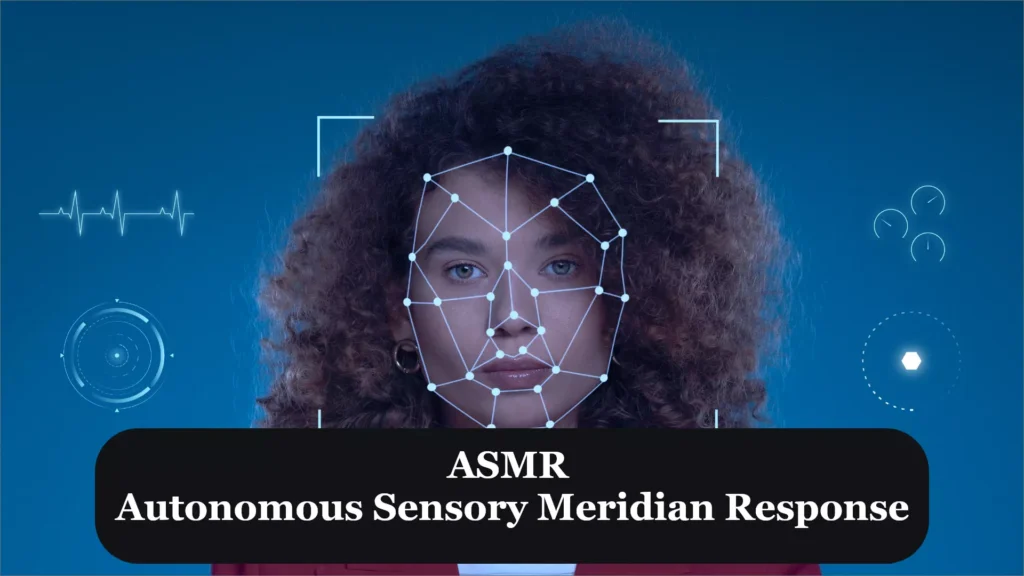ASMR Meaning: How it Works and Why it’s Popular

In recent years, ASMR, which stands for Autonomous Sensory Meridian Response, has emerged as a captivating and widely discussed phenomenon. ASMR refers to the tingling, relaxing sensation that some individuals experience when exposed to specific auditory or visual triggers, often resulting in a deep sense of tranquility and calm. Its popularity has surged, thanks in large part to the internet and platforms like YouTube, where ASMR content creators have amassed millions of followers.
This blog post aims to delve into the fascinating world of ASMR, shedding light on its meaning, the science behind it, its various triggers, and the benefits it offers, as well as addressing some common criticisms and ethical concerns.
Whether you’re a seasoned ASMR enthusiast or new to the concept, this post will provide valuable insights into this unique sensory experience.
What Does ASMR Mean?
ASMR is an acronym that stands for “Autonomous Sensory Meridian Response.” It refers to a distinct sensory experience characterized by a tingling sensation, often described as a gentle, static-like feeling, typically starting at the scalp and spreading down the neck and spine. This phenomenon is triggered by specific auditory or visual stimuli and is known for its deeply relaxing and pleasurable nature.
While the acronym may seem complex, its components offer valuable insights into the sensations and responses associated with ASMR:
How "ASMR" Relates to the Phenomenon?
“Autonomous” signifies that ASMR is an involuntary response, something that occurs without conscious effort or control. People do not choose to experience ASMR; it happens naturally when they are exposed to triggers.
“Sensory” indicates that ASMR pertains to the senses, particularly the auditory and visual senses. ASMR is predominantly triggered by various sounds, such as whispers, tapping, or crinkling, as well as visual stimuli, like watching someone perform a meticulous task.
“Meridian” suggests a point or peak, signifying the heightened state of sensory awareness that ASMR enthusiasts often describe when they experience tingles.
“Response” underscores the fact that ASMR involves a bodily reaction to specific stimuli. This response typically involves relaxation, reduced stress, and a heightened sense of well-being.
How these Triggers Create ASMR Experiences ?
ASMR triggers work by stimulating specific sensory receptors in the brain, and the mechanisms behind them can vary depending on the individual.
However, there are some common ways in which these triggers create ASMR experiences:
i. Auditory Stimulation
Many ASMR triggers involve auditory stimulation, such as the gentle sound of tapping or whispering. These sounds can create a relaxing and pleasurable sensory experience by engaging the auditory cortex and triggering a release of neurotransmitters associated with pleasure and relaxation.
ii. Tactile and Visual Associations
ASMR triggers can also evoke tactile and visual associations. For example, the sound of tapping may be associated with a sensation of someone lightly touching your skin, while the visual triggers like watching meticulous tasks can create a sense of focus and calm.
iii. Emotional Connection
ASMR content creators often establish a sense of emotional connection with their viewers, creating a feeling of trust and safety. This emotional aspect enhances the overall ASMR experience by promoting relaxation and reducing anxiety.
iv. Predictability and Repetition
Many ASMR triggers involve predictable and repetitive patterns, which can be soothing to the brain. The brain enjoys patterns and rhythm, and ASMR triggers often play into this preference, further enhancing the relaxing effect.
v. Personal Preferences
ASMR experiences are highly subjective, and what triggers ASMR in one person may not work for another. Personal preferences and past experiences play a significant role in determining which triggers are effective for an individual.
Benefits of ASMR
ASMR, or Autonomous Sensory Meridian Response, is a term used to describe a tingling, relaxing sensation that some people experience in response to certain auditory or visual stimuli.
While the scientific understanding of ASMR is still evolving, there are several reported benefits associated with experiencing ASMR:
i. Relaxation
Many people find that ASMR triggers induce a profound sense of relaxation and calm. This can be particularly helpful for those dealing with stress, anxiety, or insomnia.
ii. Stress Reduction
ASMR videos or experiences can help reduce stress and anxiety levels by promoting a sense of tranquility and mental clarity.
iii. Improved Sleep
ASMR can be a valuable tool for improving sleep quality. Some individuals use ASMR content to help them fall asleep faster and enjoy more restful sleep.
iv. Enhanced Focus
Some people find that ASMR can help them concentrate and stay focused on tasks by providing a soothing background noise that drowns out distractions.
v. Pain Relief
While not a replacement for medical treatment, ASMR may help some individuals temporarily alleviate minor aches and pains by diverting their attention and promoting relaxation.
vi. Mood Enhancement
ASMR can trigger the release of endorphins, which are natural mood-boosting chemicals. As a result, it can help improve one’s mood and promote feelings of happiness and contentment.
vii. Creative Inspiration
Some individuals report that ASMR experiences can spark creativity and inspiration, making it a useful tool for artists, writers, and others in creative fields.
viii. Social Connection
ASMR content often fosters a sense of community among those who share an interest in it. Viewers or listeners may engage in discussions or participate in online forums to connect with others who enjoy ASMR.
ix. Sensory Exploration
ASMR can provide a unique and pleasurable sensory experience for those who enjoy it, similar to other sensory hobbies like cooking, music, or visual art.
Note :
It’s important to note that ASMR’s effects can vary from person to person. Not everyone experiences ASMR, and the intensity and triggers can be highly individualized. While many people find ASMR beneficial, scientific research on the subject is still limited, and more studies are needed to better understand the physiological and psychological mechanisms at play. If you’re interested in exploring ASMR for its potential benefits, you can try watching ASMR videos or experimenting with various triggers to see if it works for you.
ASMR Meaning on Tiktok
On TikTok, ASMR (Autonomous Sensory Meridian Response) refers to content that is specifically designed to trigger the tingling, relaxing sensation associated with ASMR experiences.
TikTok users create short videos that often include various ASMR triggers, such as whispering, tapping, crinkling, or other soothing sounds and visuals.
These videos are intended to provide viewers with a brief ASMR experience, offering relaxation and sensory pleasure.
What Does ASMR Mean in Text?
In text messaging and online communication, “ASMR” stands for “Autonomous Sensory Meridian Response.” It refers to the tingling, relaxing sensation that some individuals experience when exposed to specific auditory or visual triggers, often resulting in a deep sense of tranquility and calm.
People might use “ASMR” in text to discuss ASMR content, and experiences, or to express that they find something soothing or relaxing, similar to the way they might use “LOL” for laughter or “OMG” for surprise.
Final Words - ASMR Meaning
In conclusion, ASMR, short for Autonomous Sensory Meridian Response, is a captivating phenomenon that elicits tingling, soothing sensations. It not only offers stress relief and potential therapeutic benefits but also maintains an enduring global appeal.
Encouraging exploration for relaxation, ASMR provides a diverse range of triggers and content to suit individual preferences, making it a unique and accessible avenue for tranquility and sensory pleasure.
Discover the ASMR meaning and experience its profound relaxation today.




